|
|
|
| | Arts Calendar / November 25 / Exhibitions |
|
|
|
| 100th Anniversary of the State Museum of Fine Arts of A.S. Pushkin: Realism, Impressionism, Art Nouveau |
|
|
|
|
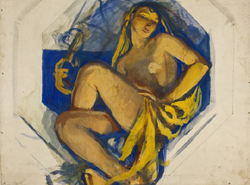 One of the last cultural events, devoted to the celebration of the 100th anniversary of the Pushkin Museum of Fine Arts, is an exhibition of drawings from the collection of the museum exhibited in the graphic-arts halls of the Tretyakov Gallery. The anniversary of the museum is a propitious occasion to acquaint the public with the least known part of its graphic collection. The exposition includes about two hundred graphic drawings by great masters and not so famous painters. These works are important for the collection of the museum, but also for the Russian drawing school as a whole. In 1920s, the Pushkin Museum of Fine Arts got a big collection of drawings from the Engraving Cabinet of the disbanded Rumyantsevsky Museum. The nationalized merchants’ and nobles’ collections began to arrive from the State Museum Fund as well. That time was considered the beginning of the Pushkin Museum's graphic art collection. The first purchases and gifts of artworks to the Museum refer to the same time too. The exhibition at the Tretyakov Gallery presents works from a number of big private collections of the end of the 19th century - the beginnings of the 20th century. Those were collections of Major-General A.P. Klachkov, merchants K.T. Soldatyonkov, I.P. Sveshnikov, N.V. Basnin, A.V. Kasyanov, princes S.A. Shcherbatov, A.A. Musin-Pushkin. In 1949, the museum got the collection of the critic and the bibliographer P.D. Ettinger, consisting of some several thousands of graphic works. The fund of drawings was considerably replenished in 1960-1980s when the heritages of N.S. Goncharova and M.F. Larionov, A.N. Benois and Z.E. Serebryakova were added to the museum. The Ministry of Culture of the USSR also purchased many significant works for the museum from private collectors and antique shops. Russian culture of 1850-1910s is remarkable by a variety and a change of art trends, a change of attitudes to the problems and content of art. The exposition demonstrates the works of the main graphic artists of that time: masters of the academic school, several generations of the Itinerants Society for Circulation Art Exhibitions ("Peredvizhniki"), participants of the Abramtsevsky artistic society, members of the associations "World of Art", the Union of Russian artists, "Blue Rose". Among the exhibits - drawings by S.P. Lodygin, A.V. Remizova and B.I. Anisfeld, created under the influence of an English graphic artist Aubrey Beardsley, who was popular in Russia; the pastels by M.F. Larionov and D.A. Shcherbinovsky, inspired by the French impressionists and postimpressionists. The pearl of the exposition are masterpieces in the style of Russian modern: sketches by V.E. Borisov-Musatov for a non- realized painting "Dream of a Deity" in the A.I. Derozhinskaya's mansion (1904-1905) and "Self-portrait with the family" by G.I. Narbut (1915) - a proverbial silhouette work, which has become a visit card of the exhibition. Also the exposition in the Tretyakov Gallery reveals a remarkable feature of the Pushkin Museum's collection - a rather small amount of drawings by painters and, on the contrary, a representative collection of works of graphic arts' masters - draughtsmen and aquarellists (A.N. Benois, M.V. Dobuzhinsky, A.P. Ostroumova-Ledebeva), engravers and lithographers (A.I. Lebedev, I.P. Pozhalostin). The main surprise of the exhibition - a reunification of related works from the collection of the Pushkin Museum and the collection of the Tretyakov Gallery: special area within the exposition is allocated for them. Demonstration of the Pushkin Museum's collection in the graphic-arts halls of the Tretyakov Gallery gives a unique possibility to see works from the Museum collection in the general context of Russian art. One of the last cultural events, devoted to the celebration of the 100th anniversary of the Pushkin Museum of Fine Arts, is an exhibition of drawings from the collection of the museum exhibited in the graphic-arts halls of the Tretyakov Gallery. The anniversary of the museum is a propitious occasion to acquaint the public with the least known part of its graphic collection. The exposition includes about two hundred graphic drawings by great masters and not so famous painters. These works are important for the collection of the museum, but also for the Russian drawing school as a whole. In 1920s, the Pushkin Museum of Fine Arts got a big collection of drawings from the Engraving Cabinet of the disbanded Rumyantsevsky Museum. The nationalized merchants’ and nobles’ collections began to arrive from the State Museum Fund as well. That time was considered the beginning of the Pushkin Museum's graphic art collection. The first purchases and gifts of artworks to the Museum refer to the same time too. The exhibition at the Tretyakov Gallery presents works from a number of big private collections of the end of the 19th century - the beginnings of the 20th century. Those were collections of Major-General A.P. Klachkov, merchants K.T. Soldatyonkov, I.P. Sveshnikov, N.V. Basnin, A.V. Kasyanov, princes S.A. Shcherbatov, A.A. Musin-Pushkin. In 1949, the museum got the collection of the critic and the bibliographer P.D. Ettinger, consisting of some several thousands of graphic works. The fund of drawings was considerably replenished in 1960-1980s when the heritages of N.S. Goncharova and M.F. Larionov, A.N. Benois and Z.E. Serebryakova were added to the museum. The Ministry of Culture of the USSR also purchased many significant works for the museum from private collectors and antique shops. Russian culture of 1850-1910s is remarkable by a variety and a change of art trends, a change of attitudes to the problems and content of art. The exposition demonstrates the works of the main graphic artists of that time: masters of the academic school, several generations of the Itinerants Society for Circulation Art Exhibitions ("Peredvizhniki"), participants of the Abramtsevsky artistic society, members of the associations "World of Art", the Union of Russian artists, "Blue Rose". Among the exhibits - drawings by S.P. Lodygin, A.V. Remizova and B.I. Anisfeld, created under the influence of an English graphic artist Aubrey Beardsley, who was popular in Russia; the pastels by M.F. Larionov and D.A. Shcherbinovsky, inspired by the French impressionists and postimpressionists. The pearl of the exposition are masterpieces in the style of Russian modern: sketches by V.E. Borisov-Musatov for a non- realized painting "Dream of a Deity" in the A.I. Derozhinskaya's mansion (1904-1905) and "Self-portrait with the family" by G.I. Narbut (1915) - a proverbial silhouette work, which has become a visit card of the exhibition. Also the exposition in the Tretyakov Gallery reveals a remarkable feature of the Pushkin Museum's collection - a rather small amount of drawings by painters and, on the contrary, a representative collection of works of graphic arts' masters - draughtsmen and aquarellists (A.N. Benois, M.V. Dobuzhinsky, A.P. Ostroumova-Ledebeva), engravers and lithographers (A.I. Lebedev, I.P. Pozhalostin). The main surprise of the exhibition - a reunification of related works from the collection of the Pushkin Museum and the collection of the Tretyakov Gallery: special area within the exposition is allocated for them. Demonstration of the Pushkin Museum's collection in the graphic-arts halls of the Tretyakov Gallery gives a unique possibility to see works from the Museum collection in the general context of Russian art.
Tretyakov Art Gallery  |
|
|
|
|
|
|
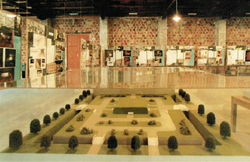 Ilya and Emilia Kabakov's exhibition "Monument to a Lost Civilization" that was on view at the 1st Kiev Biennale of Contemporary Art Arsenale 2012 will be presented for the first time in Moscow. This exhibition is organized by Red October gallery in collaboration with the Moscow Museum of Modern Art. World-renowned artist Ilya Kabakov is regarded as a living classic of contemporary art which was confirmed by the countless exhibitions in Europe and the United States. His famous "total" installations are well-known around the world; they have been exhibited at the leading art institutions like Pompidou centre in Paris, the MOMA and the Guggenheim Museum in New York, and at the Venice Biennale and Documenta in Kassel. Since 1989 his wife Emilia has joined him as they started working in collaboration. In Russia in the 2000-s their solo exhibitions were held at the Tretyakov Art Gallery, the Hermitage Museum, the Pushkin State Museum of Fine Arts, Contemporary Art Centers "Garage" and Winzavod. "Monument to a Lost Civilization" was first displayed in 1999 in Palermo and includes 37 installations, consisting of 140 individual pieces, collages and artists' texts and documents. "Monument To A Lost Civilization" was intended by Ilya and Emilia Kabakov to be exhibited underground in a windowless space. Viewers' confusion was supposed to impart the sense of the Soviet Union. The installation displays the life of the bygone Soviet society. The authors depict the tension between the real and the ideal, the struggle of developing one's humanity within the confines of a strictly authoritarian society. Illustrating the Soviet totalitarian political system, "Monument To A Lost Civilization" refers generally to any society which has an immense impact on a human personality and at times subdues him and makes him forget who he is. Ilya and Emilia Kabakov's exhibition "Monument to a Lost Civilization" that was on view at the 1st Kiev Biennale of Contemporary Art Arsenale 2012 will be presented for the first time in Moscow. This exhibition is organized by Red October gallery in collaboration with the Moscow Museum of Modern Art. World-renowned artist Ilya Kabakov is regarded as a living classic of contemporary art which was confirmed by the countless exhibitions in Europe and the United States. His famous "total" installations are well-known around the world; they have been exhibited at the leading art institutions like Pompidou centre in Paris, the MOMA and the Guggenheim Museum in New York, and at the Venice Biennale and Documenta in Kassel. Since 1989 his wife Emilia has joined him as they started working in collaboration. In Russia in the 2000-s their solo exhibitions were held at the Tretyakov Art Gallery, the Hermitage Museum, the Pushkin State Museum of Fine Arts, Contemporary Art Centers "Garage" and Winzavod. "Monument to a Lost Civilization" was first displayed in 1999 in Palermo and includes 37 installations, consisting of 140 individual pieces, collages and artists' texts and documents. "Monument To A Lost Civilization" was intended by Ilya and Emilia Kabakov to be exhibited underground in a windowless space. Viewers' confusion was supposed to impart the sense of the Soviet Union. The installation displays the life of the bygone Soviet society. The authors depict the tension between the real and the ideal, the struggle of developing one's humanity within the confines of a strictly authoritarian society. Illustrating the Soviet totalitarian political system, "Monument To A Lost Civilization" refers generally to any society which has an immense impact on a human personality and at times subdues him and makes him forget who he is.
Red October Gallery  |
|
|
|
|
| John Cage's Experiments in Context |
|
|
|
|
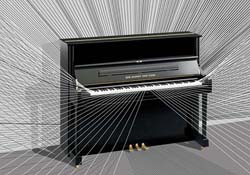 John Cage is a famous American composer, philosopher, poet, musician and artist, who became a pioneer in the field of aleatoric music, electronic music and off standard use of musical instruments. Gage has fundamentally changed the perception of music: he was interested in "non-composition" technologies, based on Buddist principle of non-doing and using ordinary noises. John Cage's ideas in many ways defined the development of not only music, but also the Visual culture of the post-war avant-garde. Representatives of neo-Dada, Fluxus and the New Conceptualism considered his aesthetics as a source of inspiration for their own experiments. Today critics call Gage one of the most influential American composers of the 20th century. "John Gage. The Silent Presence" exhibition project, implemented in the year of the composer's centenary by the NCCA in cooperation with John Gage Trust (USA) is a part of a wider international celebratory program. The exhibition presented at the Ekaterina Cultural Foundation is dedicated to the influence of Gage's ideas and experiments on artistic culture. The exposition traces the development of the most important principles of John Gage's work in contemporary art - performativeness, the method of random action, seriation etc. Gage's aesthetics was largely defined by his communication with the artist Marcel Duchamp. "If you want to create music you have to study Duchamp", said the composer. Duchamp's drawings for the famous "Big Glass" are the central part of the exposition at the Ekaterina Cultural Foundation. This part of the project will present the works of those authors whose art was influenced by the composer's experiments: representatives of the contemporary artistic culture, both Russian: Andrei Monastyrsky, Vadim Zakharov, Vladimir Tarasov, Vladimir Martynov, Irina Nakhova, Kirill Serebrennikov and others; and Western - Gianfranco Baruchello (Italy), Christian Lebrat (France), Martin Zet (Czech Republic) and others. Moreover the exposition presents Gage's graphic works - Seven Day Diary series, Stones, pages of the Mushroombook; visual scores of Fontanamix, Ryoanji, Music of Carillon and others together with their recording and performances, as well as reconstruction of John Gage's legendary "Lecture on the Weather" (1975). Besides Gage's works the audience will see photographs and documentaries about him. John Cage is a famous American composer, philosopher, poet, musician and artist, who became a pioneer in the field of aleatoric music, electronic music and off standard use of musical instruments. Gage has fundamentally changed the perception of music: he was interested in "non-composition" technologies, based on Buddist principle of non-doing and using ordinary noises. John Cage's ideas in many ways defined the development of not only music, but also the Visual culture of the post-war avant-garde. Representatives of neo-Dada, Fluxus and the New Conceptualism considered his aesthetics as a source of inspiration for their own experiments. Today critics call Gage one of the most influential American composers of the 20th century. "John Gage. The Silent Presence" exhibition project, implemented in the year of the composer's centenary by the NCCA in cooperation with John Gage Trust (USA) is a part of a wider international celebratory program. The exhibition presented at the Ekaterina Cultural Foundation is dedicated to the influence of Gage's ideas and experiments on artistic culture. The exposition traces the development of the most important principles of John Gage's work in contemporary art - performativeness, the method of random action, seriation etc. Gage's aesthetics was largely defined by his communication with the artist Marcel Duchamp. "If you want to create music you have to study Duchamp", said the composer. Duchamp's drawings for the famous "Big Glass" are the central part of the exposition at the Ekaterina Cultural Foundation. This part of the project will present the works of those authors whose art was influenced by the composer's experiments: representatives of the contemporary artistic culture, both Russian: Andrei Monastyrsky, Vadim Zakharov, Vladimir Tarasov, Vladimir Martynov, Irina Nakhova, Kirill Serebrennikov and others; and Western - Gianfranco Baruchello (Italy), Christian Lebrat (France), Martin Zet (Czech Republic) and others. Moreover the exposition presents Gage's graphic works - Seven Day Diary series, Stones, pages of the Mushroombook; visual scores of Fontanamix, Ryoanji, Music of Carillon and others together with their recording and performances, as well as reconstruction of John Gage's legendary "Lecture on the Weather" (1975). Besides Gage's works the audience will see photographs and documentaries about him.
Ekaterina Cultural Fund  |
|
|
|
|
|
|
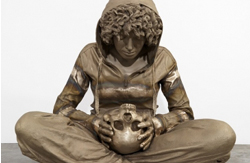 "The big wheel keeps on turning" is an exhibition of Marc Quinn, a British artist, sculptor, and one of a loose group known as the Young British Artists. Quinn has used blood, ice and faeces to make sculptures; his work sometimes refers to scientific developments. Quinn's oeuvre displays a preoccupation with the mutability of the body and the dualisms that define human life: spiritual and physical, surface and depth, cerebral and sexual. Multimedia Art Museum will exhibit more than 60 Quinn's works such as sculptures, large-scale paintings, multimedia installations, which were made in different years, and present all aspects of Quinn's creative. Among his new works are Life Breathes the Breath (2012), The Origin of the World (2012), Vice as an Object of Virtue (2010), Stealth Kate (2010), paintings from The Eye of History series. Quinn's sculpture, paintings and drawings often deal with the distanced relationship we have with our bodies, highlighting how the conflict between the "natural" and "cultural" has a grip on the contemporary psyche. In 1999, Quinn began a series of marble sculptures of amputees as a way of re-reading the aspirations of Greek and Roman statuary and their depictions of an idealised whole. One such work depicted Alison Lapper, a woman who was born without arms, when she was heavily pregnant. Quinn subsequently enlarged this work to make it a major piece of public art for the fourth plinth of Trafalgar Square. Other key themes in his work include genetic modification and hybridism. Quinn's diverse and poetic work meditates on our attempts to understand or overcome the transience of human life through scientific knowledge and artistic expression. "The big wheel keeps on turning" is an exhibition of Marc Quinn, a British artist, sculptor, and one of a loose group known as the Young British Artists. Quinn has used blood, ice and faeces to make sculptures; his work sometimes refers to scientific developments. Quinn's oeuvre displays a preoccupation with the mutability of the body and the dualisms that define human life: spiritual and physical, surface and depth, cerebral and sexual. Multimedia Art Museum will exhibit more than 60 Quinn's works such as sculptures, large-scale paintings, multimedia installations, which were made in different years, and present all aspects of Quinn's creative. Among his new works are Life Breathes the Breath (2012), The Origin of the World (2012), Vice as an Object of Virtue (2010), Stealth Kate (2010), paintings from The Eye of History series. Quinn's sculpture, paintings and drawings often deal with the distanced relationship we have with our bodies, highlighting how the conflict between the "natural" and "cultural" has a grip on the contemporary psyche. In 1999, Quinn began a series of marble sculptures of amputees as a way of re-reading the aspirations of Greek and Roman statuary and their depictions of an idealised whole. One such work depicted Alison Lapper, a woman who was born without arms, when she was heavily pregnant. Quinn subsequently enlarged this work to make it a major piece of public art for the fourth plinth of Trafalgar Square. Other key themes in his work include genetic modification and hybridism. Quinn's diverse and poetic work meditates on our attempts to understand or overcome the transience of human life through scientific knowledge and artistic expression.
Multimedia Art Museum  |
|
|
|
|
| Pavel Florenskiy: Russian Leonardo |
|
|
|
|
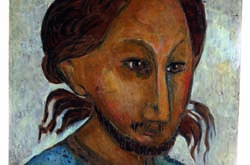 Pavel Florensky was a Russian Orthodox theologian, priest, philosopher, mathematician, physicist, electrical engineer, inventor, Neomartyr and all-around polymath. He studied in Moscow State University at the mathematics' department where he became friends with the future poet and theorist of Russian symbolism Andrei Bely. He also took courses on ancient philosophy. During this period the young Florensky, who had no religious upbringing, began taking an interest in studies beyond "the limitations of physical knowledge." After University he proceeded to study theology at the Ecclesiastical Academy in Sergiyev Posad where Florensky's interests included philosophy, religion, art and folklore. He became a prominent member of the Russian Symbolism movement, together with his friend Andrei Bely, and published his works in popular magazines. He also started his main philosophical work, The Pillar and Ground of the Truth: an Essay in Orthodox Theodicy in Twelve Letters. In the second half of the 1920s, he mostly worked on physics and electrodynamics, eventually publishing his paper Imaginary numbers in Geometry devoted to the geometrical interpretation of Albert Einstein's theory of relativity. Among other things, he proclaimed that the geometry of imaginary numbers predicted by the theory of relativity for a body moving faster than light is the geometry of the Kingdom of God. The display "Pavel Florenskiy - Russian Leonardo" will present Florensky's drawings, documents, book illustrations, photos and portraits from his Museum Flat. Pavel Florensky was a Russian Orthodox theologian, priest, philosopher, mathematician, physicist, electrical engineer, inventor, Neomartyr and all-around polymath. He studied in Moscow State University at the mathematics' department where he became friends with the future poet and theorist of Russian symbolism Andrei Bely. He also took courses on ancient philosophy. During this period the young Florensky, who had no religious upbringing, began taking an interest in studies beyond "the limitations of physical knowledge." After University he proceeded to study theology at the Ecclesiastical Academy in Sergiyev Posad where Florensky's interests included philosophy, religion, art and folklore. He became a prominent member of the Russian Symbolism movement, together with his friend Andrei Bely, and published his works in popular magazines. He also started his main philosophical work, The Pillar and Ground of the Truth: an Essay in Orthodox Theodicy in Twelve Letters. In the second half of the 1920s, he mostly worked on physics and electrodynamics, eventually publishing his paper Imaginary numbers in Geometry devoted to the geometrical interpretation of Albert Einstein's theory of relativity. Among other things, he proclaimed that the geometry of imaginary numbers predicted by the theory of relativity for a body moving faster than light is the geometry of the Kingdom of God. The display "Pavel Florenskiy - Russian Leonardo" will present Florensky's drawings, documents, book illustrations, photos and portraits from his Museum Flat.
Multimedia Art Museum  |
|
|
|
|
|
|
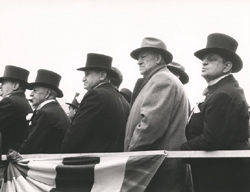 An exhibition will present comprehensive demonstration of works by Swiss influential photographer and filmmaker Robert Frank from the Collections of Fotomuseum Winterthur and Fotostiftung Schweiz, Switzerland. There are 120 photographs displaying all perionds of Frank's creation: his photographs making in Switserland in 40's and in Peru in 1948, "Black, White and others" series of pictures in Paris, Spain, Italy, United Kingdom, photographs from photo-best-seller The Americans and pictures of USA in 50's, and shots from movies. Frank grew up under the World War II threat of Nazism. He turned to photography in part as a means to escape the confines of his business-oriented family and home, and trained under a few photographers and graphic designers before he released his first book of photographs, 40 Fotos, in 1946. Frank emigrated to the United States in 1947, and secured a job in New York City as a fashion photographer for Harper's Bazaar. He soon left to travel in South America and Europe. He published two more books of photos he took in Peru, and returned to the U.S. in 1950. That year was momentous for Frank, who after meeting Edward Steichen participated in the group show 51 American Photographers at the Museum of Modern Art. Robert Frank is best known for his photography collection The Americans. Initially published in Paris, the book faced significant criticism upon it's U.S. publication. It is now considered a seminal work in American photography and art history. During the 1960's Frank devoted himself to making films and returned to photography during the early 1970's. His work shifted from cultural to private issues, partly due to the tragic death of his daughter in a plane crash. Robert Frank's work is created to give the viewer a new way of seeing the world with the use of grainy, dramatic, blurred and tilted shots. An exhibition will present comprehensive demonstration of works by Swiss influential photographer and filmmaker Robert Frank from the Collections of Fotomuseum Winterthur and Fotostiftung Schweiz, Switzerland. There are 120 photographs displaying all perionds of Frank's creation: his photographs making in Switserland in 40's and in Peru in 1948, "Black, White and others" series of pictures in Paris, Spain, Italy, United Kingdom, photographs from photo-best-seller The Americans and pictures of USA in 50's, and shots from movies. Frank grew up under the World War II threat of Nazism. He turned to photography in part as a means to escape the confines of his business-oriented family and home, and trained under a few photographers and graphic designers before he released his first book of photographs, 40 Fotos, in 1946. Frank emigrated to the United States in 1947, and secured a job in New York City as a fashion photographer for Harper's Bazaar. He soon left to travel in South America and Europe. He published two more books of photos he took in Peru, and returned to the U.S. in 1950. That year was momentous for Frank, who after meeting Edward Steichen participated in the group show 51 American Photographers at the Museum of Modern Art. Robert Frank is best known for his photography collection The Americans. Initially published in Paris, the book faced significant criticism upon it's U.S. publication. It is now considered a seminal work in American photography and art history. During the 1960's Frank devoted himself to making films and returned to photography during the early 1970's. His work shifted from cultural to private issues, partly due to the tragic death of his daughter in a plane crash. Robert Frank's work is created to give the viewer a new way of seeing the world with the use of grainy, dramatic, blurred and tilted shots.
Multimedia Art Museum  |
|
|
|
|
| Under the Sign of Rembrandt |
|
|
|
|
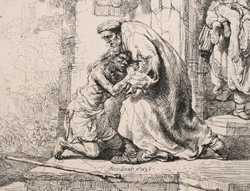 The Department of Private Collections of Pushkin State Museum of Fine Arts presents an exhibition of the once private collection of the distinguished engraver Nikolay Semyonovich Mosolov (1847-1914), which was donated to the printroom in 1914. The Mosolov family is reknown as a famous collector of etchings by Rembrandt and artists of the Dutch and Flemish school. One of the best etcher of our time Nikolai Semenovich Mosolov and his father were connoisseurs and catalogued their collection, affording us the rare opportunity of following the transformation of this remarkable family collection throughout the years as it passed from one owner to the other. At this exibition there will be the best 17th-century Dutch drawings and prints by Adriaen van Ostade, Hendrick Avercamp, Karel Dujardin, van Goyen, Ruysdael and others, including etchings by Rembrandt. Rembrandt van Rijn is generally considered one of the greatest painters and printmakers in European art history and the most important in Dutch history. His contributions to art came in a period of great wealth and cultural achievement that historians call the Dutch Golden Age when Dutch Golden Age painting, although in many ways antithetical to the Baroque style that dominated Europe, was extremely prolific and innovative. Having achieved youthful success as a portrait painter, Rembrandt's later years were marked by personal tragedy and financial hardships. Yet his etchings and paintings were popular throughout his lifetime, his reputation as an artist remained high, and for twenty years he taught many important Dutch painters. Rembrandt's greatest creative triumphs are exemplified especially in his portraits of his contemporaries, self-portraits and illustrations of scenes from the Bible. His self-portraits form a unique and intimate biography, in which the artist surveyed himself without vanity and with the utmost sincerity. The Department of Private Collections of Pushkin State Museum of Fine Arts presents an exhibition of the once private collection of the distinguished engraver Nikolay Semyonovich Mosolov (1847-1914), which was donated to the printroom in 1914. The Mosolov family is reknown as a famous collector of etchings by Rembrandt and artists of the Dutch and Flemish school. One of the best etcher of our time Nikolai Semenovich Mosolov and his father were connoisseurs and catalogued their collection, affording us the rare opportunity of following the transformation of this remarkable family collection throughout the years as it passed from one owner to the other. At this exibition there will be the best 17th-century Dutch drawings and prints by Adriaen van Ostade, Hendrick Avercamp, Karel Dujardin, van Goyen, Ruysdael and others, including etchings by Rembrandt. Rembrandt van Rijn is generally considered one of the greatest painters and printmakers in European art history and the most important in Dutch history. His contributions to art came in a period of great wealth and cultural achievement that historians call the Dutch Golden Age when Dutch Golden Age painting, although in many ways antithetical to the Baroque style that dominated Europe, was extremely prolific and innovative. Having achieved youthful success as a portrait painter, Rembrandt's later years were marked by personal tragedy and financial hardships. Yet his etchings and paintings were popular throughout his lifetime, his reputation as an artist remained high, and for twenty years he taught many important Dutch painters. Rembrandt's greatest creative triumphs are exemplified especially in his portraits of his contemporaries, self-portraits and illustrations of scenes from the Bible. His self-portraits form a unique and intimate biography, in which the artist surveyed himself without vanity and with the utmost sincerity.
Pushkin Fine Arts Museum  |
|
|
|
|
|
| July |
| | | | | |
19 |
20 |
21 |
22 |
23 |
24 |
25 |
26 |
27 |
28 |
29 |
30 |
31 |
| August
|
| | | | |
1 |
2 |
3 |
4 |
5 |
6 |
7 |
8 |
9 |
10 |
11 |
12 |
13 |
14 |
15 |
16 |
17 |
|
|